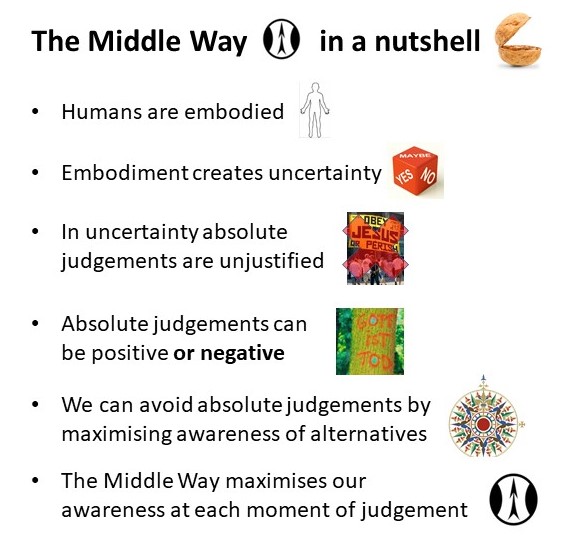All posts by Robert M Ellis
Where the wild things aren’t
I’ve just been reading a highly recommended book by George Monbiot, the radical British environmental journalist, called ‘Feral: Rewilding the Land, Sea and Human Life‘. I think it’s fair to say that it’s transformed my view of rewilding, making me see important connections between it and the Middle Way. I previously thought of rewilding very much as an extreme romantic fringe of environmentalism. Given ever-increasing human exploitation of the planet, I thought it was a hard enough job even to moderate its effects, let alone throw it into reverse. But Monbiot has made me think again.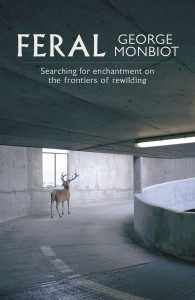
Part of the power of his book is revealed by the last part of the subtitle: rewilding is very much about us and our relationship to ourselves, not just about a high-minded focus on the environment for its own sake. The wild is a part of us, not just an aspect of the world, that we repress at our peril. Monbiot does not discuss the neuroscience, but the over-dominance of the left pre-frontal cortex, with its over-confident imposition of order and its endless confirmation bias, is an important aspect of the strained human repression of the wild. He effectively shows its self-defeating nature again and again in his account of our defensive attitudes to wildness in the world.
The over-confident imposition of order tends to neglect the complexity of our relationship with the conditions, and thus undermine our own interests in the long run. Generally, the more inequality of land ownership and the more intense the investment in human uses of the land, everywhere in the world, the more intense the monoculture and the more impoverished the biodiversity. ‘Shifting baseline syndrome’ also means that we have very restricted – localised and temporally limited – standards as to what a ‘natural environment’ looks like. This is especially evident in the highly humanised landscape of the UK, in which, for instance, the utterly treeless sheepwrecked landscape of the Glaslyn ‘nature reserve’ in Montgomeryshire is deliberately conserved exactly like that through continual over-grazing – exactly like the rest of Wales – whilst being described as “the wildest and most regionally important site”. You only need to go back a few thousand (rather than a mere hundred) years to recognise that the ‘natural’ vegetation of most of the UK is temperate rainforest, not overgrazed pasture, but it’s not only sentimental members of the public and the National Farmers’ Union who think otherwise, it’s even some ‘conservationists’.
The particularly perverse example of the British uplands is revealed particularly well by Monbiot, as he shows that the extermination of biodiversity is also so much contrary to even a hard-headed economic assessment of human interests. The bare compacted soil of the green deserts barely retains any water, so after heavy rainfall it is the riverside towns in the plains below that flood as a consequence – but the links between sheepwrecking and flooding are barely discussed. The sheep farms are only maintained at the cost of huge EU subsidies – but ones that Brexit will probably not end, as they are also supported by a British government in the pockets of the Farmers’ Union. Monbiot shows that the economic value of sheep-farming to rural communities is also much less than the revenue they could get from tourism if the uplands were rewilded – so the farmers are not even defending a coherent assessment of their own economic interests. One thing Monbiot does not discuss is also that hardly anyone in Britain even eats sheep any more – most of them are live-exported to Europe and the Middle East at the cost of huge animal suffering.
There are only a few pockets of land where re-wilding of the uplands has been tried – but sufficient to prove that it could be done. Monbiot finds those places in both Wales and Scotland (where, in the Highlands, it is deer rather than sheep that are the wreckers). Although much soil has been lost in some places, there is still sufficient in most of the uplands to support trees, together with vastly greater diversity and a much greater capacity for carbon absorption. The development and maintenance of rewilded land can be greatly aided by the re-introduction of top predators, such as wolves and lynx, who keep the numbers of grazing animals in check far more cheaply and effectively than humans can, preventing grazers destroying the forest, and in the process have a dramatic effect on the landscape.
Monbiot gives a big perspective on the possibilities for re-introduction. Reminding us that not that long ago, hippopotamuses were wallowing in what is now Trafalgar Square in London. He doesn’t realistically expect elephants and lions to be re-introduced into Britain any time soon, but does point out that the native vegetation is adapted to their presence: with the splitting properties of willows probably attributable to an ability to recover after elephant attacks. The environmental system has a complexity that we need to understand over a long period of time rather than only in the terms of one time and place. But the most striking aspect of his discussion of re-introductions to me is just the recognition that in some ways we need dangerous and inconvenient animals around for our own psychic health. If there is no wildness and threat, we tend to create our own substitutes, and these may actually be far more dangerous. Personally, reared in safe Britain, I’m not at all ready for coping with dangerous wild animals, and my experience goes no further than believing that a moss-covered trunk in Lapland was a bear, but I can see that it might be good for me to have to engage more fully with that unacknowledged area of experience.
Monbiot also talks at length about the sea, and the massive destruction of its life and biodiversity by nets that trawl the sea-bed. He narrates at length his personal experiences of dangerous forays off the Welsh coast in a kayak. I don’t share his enthusiasm for angling or his willingness to risk his life alone in small boats, but, again, I can recognise the value of this personal attempt to confront and engage with wildness, and the close connection it has with our embodied experience. In the end his argument about the sea is the same as that about the land: to rewild we have to preserve in a way that allows the biodiversity of the sea to redevelop to its amazing pre-industrial levels (where the tales of abundance are practically unbelievable today). Just as sheepwrecked pasture is not a ‘wild’ nature reserve by any stretch of the imagination, nor is a ‘marine reserve’ that still allows commercial fishing.
So what does this have to do with the Middle Way? It is obvious that absolutisation is closely related to the overexploitation and monoculture that has impoverished the environment, not just in Britain but across the world. Though there is also a reverse absolutisation that might try to deny the worth of human beings, the Middle Way nevertheless actually seems to demand quite a radical view – one that focuses on the long-term interests of human beings, rather accepting the deluded and short-sighted assumptions that support absolute monocultural answers of any kind. What is regarded as ‘moderate’ conventionally or politically is not likely to be anywhere near adequate in addressing the conditions here. The Middle Way instead takes us in the direction of allowing complex systems to form relatively stable structures that we are recognised to be a part of: i.e. getting rid of the bloody sheep.
Picture: ewe by George Gastin (creative commons – Wikimedia Commons)
On the Death of Sangharakshita
Over much of the past year, I have been working on a book that is a critical evaluation of the thought of Sangharakshita, the founder of the Triratna Buddhist Movement (formerly the FWBO). This is an exercise in trying to apply the Middle Way to a set of approaches that greatly influenced me in the earlier part of my life, from the mid-1980’s through to 2008, when I resigned from the Triratna Buddhist Order. I have been trying to test Sangharakshita’s ideas by standards that I take to be entirely practical – the standards of Sangharakshita himself at his best. When I was involved in Triratna myself, I actually had little personal contact with Sangharakshita, but had a much closer relationship with members of the Triratna Order who referred to him constantly. Now that I have taken up an evaluative task from without, though, I have actually seen more of him – having six discussions with him between January and June this year. I had arranged a seventh this week, only to hear today that Sangharakshita, after being admitted to hospital with pneumonia, had died. Just as I was reaching the conclusion of my book, by coincidence, Sangharakshita’s life itself has concluded. This is a long-expected event about which Sangharakshita himself was very straightforward, but death still always takes us by surprise.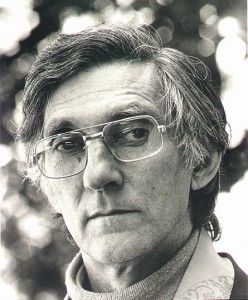
It is probably fair to say that, without Sangharakshita, there would be no Middle Way Society, at least in the form this one takes. It is from the movement that he founded and shaped that I experienced a living example of a spiritual movement that takes universal elements from Buddhism to apply them in the West, and that puts the emphasis on integrative practice rather than merely belief. It was this model that had influenced me most – both positively and negatively – when I proposed setting up the Middle Way Society, and especially that made me feel that retreats with a focus on practice as well as theory should be an important part of the society’s activity.
Sangharakshita did set considerable store by the Middle Way, and recognised it as an important aspect of Buddhism. One of my discussions with him (in May this year) was recorded as a podcast interview, and was on the theme of the Middle Way and its relationship with Buddhism. I have reproduced this podcast again here. The most interesting part of it begins at around 43:42, where I ask him whether the Middle Way was effectively part of his thinking as he ‘translated’ Buddhism to the West and set up the FWBO/Triratna. Sangharakshita says that he didn’t think it was very much, but also admits that perhaps it should have been, and agrees with me about the distinction between Buddhism and the Middle Way – both that the Middle Way can be found beyond Buddhism, and that Buddhist commitment doesn’t necessarily require people to pay much attention to the Middle Way. Instead, his emphasis was on commitment to the Three Jewels (Buddha, Dharma and Sangha) as constituting Buddhism.
During the past year, I have read far more of Sangharakshita’s work, and reflected on it far more, than I ever did in the days when I was formally (but often reluctantly) his disciple. This process has confirmed me in my view that this point about Sangharakshita’s attitude to the Middle Way is central to understanding both his strengths and his weaknesses. His strengths, at the heart of what he has achieved in Triratna, all arise from the engagement of aspects of Western culture with aspects of Buddhist teaching. His account of mind reactive and creative provides a universal and practical account of Buddhist conditionality teachings. His use of the idea of integration is highly compatible with psychological approaches, and his emphasis on individuality found fertile ground in a liberal democracy. His ideas about provisionality and experimentation even offered a nod towards scientific method – though one that unfortunately did not extend very much further than a nod. All of these offer different approaches to the kinds of judgements that we make when trying to practise the Middle Way – more creative, provisional, integrated and autonomous judgements – and were not necessarily tied to any commitment to the Buddhist tradition. His talk of archetypes even provided ways of interpreting Buddhas in a similarly helpful fashion. This was ‘universal dharma’.
However, to also understand Sangharakshita’s limitations, it is important to take into account his background. As a boy, he spent years in bed as an invalid with a supposed heart condition, reading avidly and setting up a lifetime’s habit of autodidacticism. This made him into a creative and original thinker, but never trained him in the academic habits of consistent critical thinking, nor of adapting his ideas in response to others’ criticism. He was thus poorly set up to actually practise provisionality, or to learn effectively from scientific approaches (which he tended to caricature as ‘materialism’). At the age of sixteen, he says that he read the Diamond Sutra and immediately realised that he was a Buddhist. This evidently gave him a strong intuitive commitment to the Buddhist Tradition that lasted for the rest of his life. Although he was willing to question aspects of Buddhist tradition, such as monasticism, when experience confronted him with its inadequacies, his commitment to the Buddhist tradition often also made him assume that it must be right and accord it endless benefit of the doubt. He allowed members of his Order to be (softly) “agnostic” about rebirth, for instance, but still expected the teachings on rebirth to yield ultimate truths, rather than being willing to drop belief in rebirth as a practically unhelpful aspect of the tradition.
I think these tendencies provide a basic explanation of why Sangharakshita often completely ignored the Middle Way, subjugating it to the authority of Buddhist tradition and making extremely one-sided pronouncements on all sorts of subjects, from the relative spiritual aptitude of women to the supposedly anti-individual nature of Christianity. It does not seem to have occurred to him that the critical process he began in relation to the Buddhist tradition required some sort of coherent justification beyond the limitations of that tradition itself. So instead, many of his followers have substituted the authority of Sangharakshita himself for any such coherent principle. He himself insisted, as recently as 2009, that the basis of the Order should just be what he chose it to be, apparently regardless of the basis on which he judged that it should be like that, and whether that basis stands up to scrutiny. In my view any such absolute appeal to authority as constituting the Triratna Order is completely incompatible with the Middle Way, and with the practical development of integration, provisionality, creativity and individuality that actually makes that Order as effective as it is. As long as it is followed, the Order will be subject to a deeply undermining form of cognitive dissonance, with the authority of Sangharakshita’s words at odds with the practical requirements of the conditions. It is also only because of this contradictory over-reliance on Sangharakshita’s own authority that his moral mistakes in sexual conduct turned out to be so upsetting for so many people.
Now that Sangharakshita has left us, there will understandably be an immediate response of grief and shock in Triratna. However, once things settle down, the Order will presumably feel the same release that children may feel at the death of a parent. They can now make the decisions for themselves to a much greater extent than they could before, and they can choose to make the basis of the Order whatever they choose to make it. I would urge them to make practical and universal principles the clear basis of the Order, with Buddhist tradition having an archetypal and symbolic rather than authoritative function. Only in that way can they extend the benefits of the best of Sangharakshita’s teaching, and of some of the excellent practices they have built up, to a wider section of the population. Heading the home page of Adhisthana, the retreat centre where Sangharakshita lived and where his funeral will shortly take place, is a quotation from Gustav Mahler: “Tradition is the handing on of the flame, and not the worship of ashes”. Now is the time when we will see if the placing of that quotation means what it says.
For myself, I may well go to the funeral to pay my respects to the man I got to know more personally during his final year of life. I also expect to finish drafting my book fairly soon. After that, I am looking forward to moving on from Triratna-related concerns to wider and more pressing ones – particularly those that relate to the political situation and climate change. I have no intention of getting deeply sucked into Triratna again in the long-term, much as I will have learned, and I hope also perhaps contributed, by a temporary period of re-engagement. If Triratna starts to take the Middle Way more seriously, I will welcome that with great gladness. If it does not, I’m happy to leave it to worship its own ashes.
Announcing our new webinar programme
We’ve got a new monthly webinar programme now open for booking,  running for 13 months from Dec 2018 to Dec 2019. There will be a variety of topics, all of which involve the relationship between an area of practice or interest and the Middle Way – for example, the Middle Way and Meditation, the Middle Way and Science, the Middle Way and Judaism. This is your opportunity to find out more about a Middle Way perspective in relation to a topic that already interests you, interacting with members of the society in real time online.
running for 13 months from Dec 2018 to Dec 2019. There will be a variety of topics, all of which involve the relationship between an area of practice or interest and the Middle Way – for example, the Middle Way and Meditation, the Middle Way and Science, the Middle Way and Judaism. This is your opportunity to find out more about a Middle Way perspective in relation to a topic that already interests you, interacting with members of the society in real time online.
For more information, including the full programme and how to book, please see this page.
Five Years of the Middle Way Society
The Middle Way Society is now five years old! It had its first origins in a retreat where five people got together for five days in my house in Malvern, in late August 2013. Those five people had got to know each other in the context of secular Buddhism. On that retreat, as well as us all practising together, I tried to share some of the ideas about the Middle Way as a framework for thinking, ethics and practice that I had been developing since the late 1990’s. Barry Daniel describes his experience of this retreat here. At the end of it I proposed the founding of the society, and it was agreed.
The society aims to support the development both of the idea of the Middle Way as a principle of judgement, and of the practice of the Middle Way. These two aspects of the work of the society are thoroughly interdependent, though the former is more distinct from what other organisations are doing. We are not aiming to create a new religious group, but rather a support group that is compatible with a Middle Way interpretation of any religious (or philosophical, political, scientific, or other) tradition.
The first post on this website was a simple welcome put up on 8th Sept 2013. Since then there have been 140 podcasts, hundreds of blogs (the majority by me, but also by Jim Champion, Rich Flanagan, Peter Goble and others), 32 book reviews, further audio-visual material including a set of 30 introductory videos to Middle Way Philosophy, and a number of other pages intended to introduce Middle Way Philosophy. But the website is not the only focus of the society’s activities. We have held 14 retreats so far at various venues around England, led by me, Nina Davies and Barry Daniel. We also have an ongoing Skype discussion group and a Skype meditation group. We have an active YouTube channel, with more than 1200 subscribers, a Facebook page where quotations and helpful links are frequently posted, and an active Twitter account.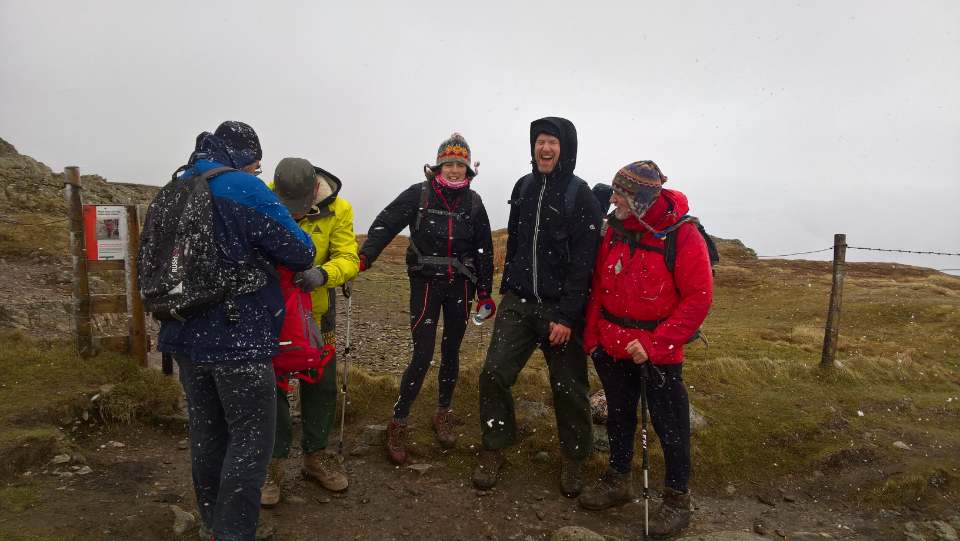
The society has grown slowly during these 5 years, and of course, like any organization, had some setbacks and difficulties. However, its wider influence has probably grown more swiftly than its actual membership. Many of the podcasts have been with relatively well known people (for instance Stephen Batchelor, Iain McGilchrist, Daniel Siegel, Sangharakshita, Daniel Goleman, Don Cupitt, Karen Armstrong, Jonathan Porritt, Ed Catmull, Stephen Jenkinson) and this has helped us to make connections between their areas of interest and the Middle Way, which sits in between them all. If a few thousand more people have heard of the Middle Way and might possibly consider it as a genuine option, when it wasn’t previously on their agendas at all, then I feel we have achieved something.
I am proud of what we have achieved in five years, even though it has sometimes felt like slow going. But there is a long, long way to go before a significant number of people even start to think of the Middle Way as a viable option. There are many individuals and movements that use the Middle Way implicitly in certain areas of belief or practice, but so far very few indeed that use it explicitly and recognise its potential. The thing we need most is more live events that help to develop a sense of community, where people are able to engage in more depth with what the Middle Way might mean for their lives. We also need more people to join the society and play a more active role in making effective live events happen.
The rest of this post gives some testimonies from three other people who have been closely involved with the society: Julian Adkins, Peter Goble and Susan Averbach.
Robert M. Ellis (Malvern, UK)
The metaphor of a middle way is used widely and so, perhaps like all of us, I have been exposed to it in different contexts for most of my life. However, it became more philosophically meaningful for me in the course of attending secular Buddhist retreats and reading related books – especially those by Stephen Batchelor. These teachings related to charting a middle way through life were much more than a benign appeal to moderation in all things, but rather a pragmatic response to radical scepticism about we can know with certainty and what that even means.
Having been a casualty of religious dogmatism at a very personal level, this is what I needed to enable me to continue to engage with a tradition I found meaningful and yet of which I was also deeply suspicious – and remain so.
It was against this background that I was introduced to Robert Ellis’s work through Barry Daniel, a mutual friend, and attended the first residential gathering of what has now become the Middle Way Society – generously hosted by Robert himself at his home in Worcestershire.
I hope my reading and involvement since has deepened my appreciation of these ideas and related practices. Indeed, it is my faltering attempts to actually practice a middle way that I value most. I still resist giving a middle way the definite article, although for convenience I often do. Perhaps this is just my own contrary nature, but perhaps it is also my own way of focusing on the metaphor of navigation; a way of proceeding rather than a specific route. As soon as I start thinking that this route is right and another is wrong, I am straight back into that black and white thinking that a middle way of doing things defies.
Of course some routes are better than others, but if I can get along the road without ending up in the ditches on either side, I’m doing okay. If I ever think I know exactly where the centre is, I am probably already in one of those ditches!
Five years since its inception is a wonderful opportunity to say thank you to the Middle Way Society; to Robert; to Barry and all those who have contributed and those who continue to do so. Thank you all.
Julian Adkins (Edinburgh, UK)
The Middle Way has internalised itself in me as a guiding principle in all my relations, with ‘myself’, with ‘other people’, and with the ‘world outside’. I am less at odds with all of ‘those things’, and the ‘connections’ I thought to have made with “every’ ‘thing’ have loosened.
I am generally less anxious and defensive.
I have been a very hard nut to crack. As when cracking a walnut, you can use a metal device, which may destroy the nut and its content, or you can use the flexed thumb as an anvil and the closed fist as a soft mallet, which does the job simply and cleanly, with practice and open-mindedly.
The Middle Way is like the latter approach, I think. But I think we may need to find other ways of sharing it more widely for it to gain traction and utility in an information- and technology-glutted world. The answer(s} elude(s) me, but beckon(s) on the periphery of my consciousness, and I acknowledge it/them.
I recently heard that the Incas knew how to use logs to move great stones, but never invented the wheel (as far as can be known from historical records and artefacts). I feel we may be at that point with the Middle Way, and I hope we are right, and that the penny will drop soon!
Peter Goble (Normandy, France)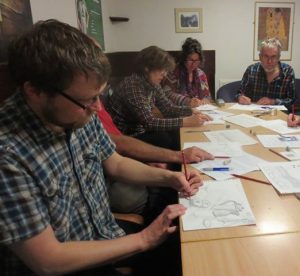
Being actively involved with the Middle Way Society, taking classes, hearing podcasts, reading blog posts, and general discussions about middle way approaches to our everyday dilemmas, has changed me for the better. I am more open to various religious practices and thoughts. I am more able to hear points of view that differ from my own, mainly because I realize that my opinions are provisional and based upon my own experience. In avoiding absolutes I am more able to ask the right questions of those who are entrenched in absolutes. If more people learned a middle way approach we’d be less divided and would be able to create a more just and loving society.
One bonus benefit of becoming versed in middle way thought is that I now have a greater appreciation of Judaism, which I think, encourages reflection and debate, especially around biblical narrative. The shared study and analysis of the Bible and commentaries over the centuries has offered a tool that has been and continues to serve an integrative purpose for many, somewhat similar to a middle way approach, in my opinion.
Susan Averbach (San Francisco, US)
Pictures are taken from Middle Way Society Retreats: 1. Walking Retreat in the Lake District 2018, (2) Meaning Retreat at Telscombe, Sussex in 2014.

